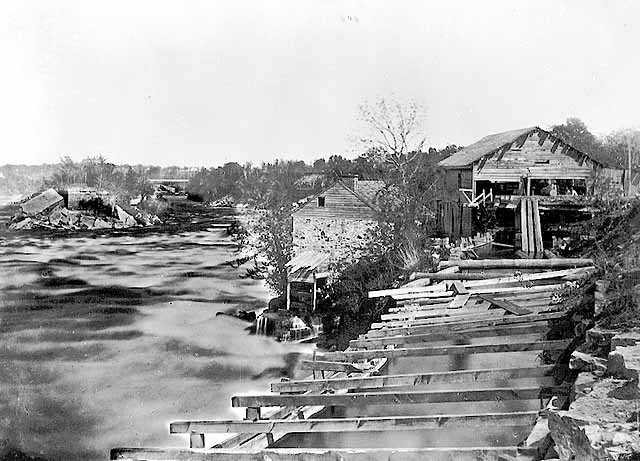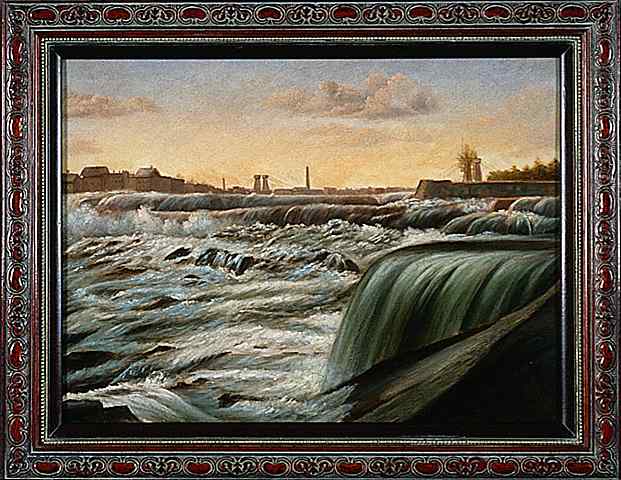The First Mills

Old Government Flour Mill and Sawmill, Minneapolis, 1857.
Minnesota Historical Society Photograph Collection, Location no. MH5.9 MP3.1G p25 Negative no. 262
E.V. is wrong on this point. The first mill at St. Anthony Falls was the government grist mill built in 1823 under the orders of Col. Snelling. It ground local wheat into poor quality flour for the troops.
In 1854, the first merchant mill opened at the falls. The "Minnesota" or "Island" mill was built on Hennepin Island by John (not W.W.) Eastman, John Rollins, and Rufus P. Upton. This was different from a gristmill—the grain was bought outright from the farmer and the mill packaged and sold the product (as opposed to the farmer bringing in his grain to be ground for his own use).
The grinding at these first mills was done with millstones, giant soft rocks that had been carved into wheels. Unlike the steel rollers used in Smalley's day, these stones had to be "dressed" frequently—hard and inefficient work—and did a poor job of separating the hard bran from Minnesota's spring wheat:
"Col. Snelling had sowed some wheat that season, and had it ground at a mill which the government had built at the falls, but the wheat had become mouldy, or sprouted, and made wretched, black, bitter tasting bread. This was issued to the troops, who got mad because they could not eat it, and brought it to the parade ground and threw it down there. Col. Snelling came out and remonstrated them."
Quote from "Early Days at Red River Settlement and Fort Snelling: Reminiscences of Mrs. Ann Adams." Minnesota Historical Society Collections 6.
St. Anthony Falls

St. Anthony Falls, ca. 1885.
Painter: Anonymous
Minnesota Historical Society Art Collection, Location No. AV1992.37.39, Negative No. 9756
"The first and enduring impetus to the growth of Minneapolis was the superb water-power furnished by the Mississippi River at the Falls of St. Anthony. The great river leaps over the soft limestone rocks in a sheer plunge of about twenty-five feet, which with the descent of the rapids above makes eighty-two feet fall within the limits of the city. Level banks on each side of the stream afforded ample opportunities for mill-sites, and the volume of water was so great that there was no fear of its failing in summer droughts...."
E. V. Smalley, "The Flour Mills of Minneapolis" in The Century; A Popular Quarterly (May, 1886).

